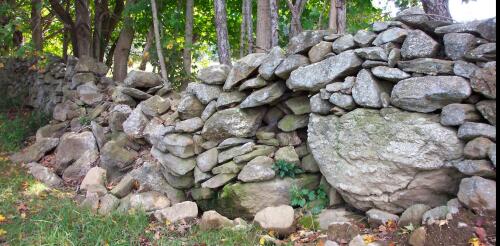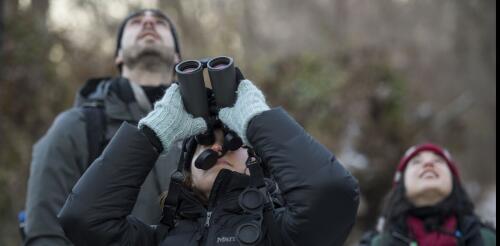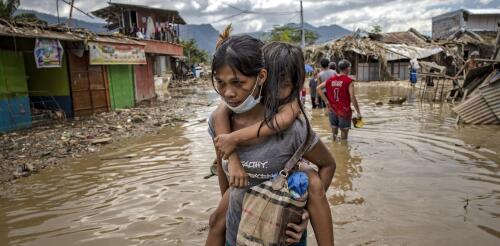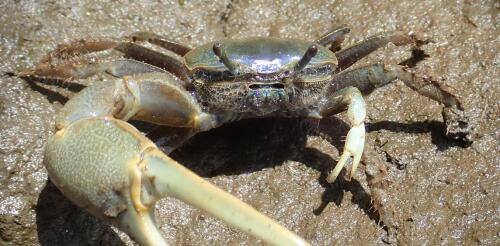environment
The abandoned fieldstone walls of New England are every bit as iconic to the region as lobster pots, town greens, sap buckets and fall foliage. They seem to be everywhere – a latticework of dry, lichen-crusted stone ridges separating a patchwork of otherwise moist soils. Stone walls can be found here and there in other states, but only in New England are they nearly ubiquitous. That’s due to a regionally unique combination of hard crystalline bedrock, glacial soils and farms with patchworks of small land parcels. Nearly all were built by European settlers and their draft animals, who scuttled glacial stones from agricultural fields and pastures outward to fencelines and boundaries, then tossed or stacked them as lines. Though the oldest walls date to 1607, most were built in the agrarian century between the American Revolution and the cultural shift toward cities and industry after the Civil War. The mass of stone that farmers moved in that century staggers the m...
This winter, tens of thousands of birders will survey winter bird populations for the National Audubon Society’s Christmas Bird Count, part of an international bird census, powered by volunteers, that has taken place every year since 1900. For many birders, participating in the count is a much-anticipated annual tradition. Tallying birds and compiling results with others connects birders to local, regional and even national birding communities. Comparing this year’s results with previous tallies links birders to past generations. And scientists use the data to assess whether bird populations are thriving or declining. But a change is coming. On Nov. 1, 2023, the American Ornithological Society announced that it will rename 152 bird species that have names honoring historical figures. A Townsend’s Solitaire, one of the species to be renamed. Jared Del Rosso, CC BY-ND Soon, Christma...
Shortly after the opening ceremony of the 2023 United Nations climate negotiations in Dubai, delegates of nations around the world rose in a standing ovation to celebrate a long-awaited agreement to launch a loss and damage fund to help vulnerable countries recover from climate-related disasters. But the applause might not yet be warranted. The deal itself leaves much undecided and has been met with criticism by climate justice advocates and front-line communities. I teach global environmental politics and climate justice and have been attending and observing these negotiations for over a decade to follow the demands for just climate solutions, including loss and damage compensation for countries that have done the least to cause climate change. COP28 President Sultan Ahmed al-Jaber, center, walks with world leaders and representatives of countries to the climate summit’s opening ceremony. The loss and damage fund was one of the fi...
Living near farmland can significantly increase people’s exposure to glyphosate, the active ingredient in the widely used herbicide Roundup, new research shows. This chemical has been connected to health concerns, including non-Hodgkin lymphoma and a higher risk of preterm birth. We are environmental health scientists who study pesticide exposures in human populations, including exposures to herbicides. In our newly published research, we tracked glyphosate levels in pregnant women for 10 months. We found that those who were living within about a third of a mile (500 meters) of an agricultural field had significantly higher levels of glyphosate in their urine than those who lived farther away. Importantly, we only saw those differences during the time of year when farmers spray glyphosate on their fields, further suggesting agricultural spray as the source of this exposure. Our research also found that eating organic food, produced without the use of synthetic pesticides,...
Nine years ago, I stood on the muddy banks of the Great Marsh, a salt marsh an hour north of Boston, and pulled a thumb-sized crab with an absurdly large claw out of a burrow. I was looking at a fiddler crab – a species that wasn’t supposed to be north of Cape Cod, let alone north of Boston. As it turned out, the marsh I was standing in would never be the same. I was witnessing climate change in action. The Great Marsh is on the Gulf of Maine, the piece of the Atlantic that extends approximately from Cape Cod, Massachusetts, to Nova Scotia, Canada. The marshes along the gulf are critical breeding sites for many bird species. But the water there is warming faster than almost anywhere else on the planet. And with warming water comes warm-water species. Marsh grass is essential for both habitat and adapting to sea-level rise in the Great Marsh. David S. Johnson Maryland blue crab and black...




